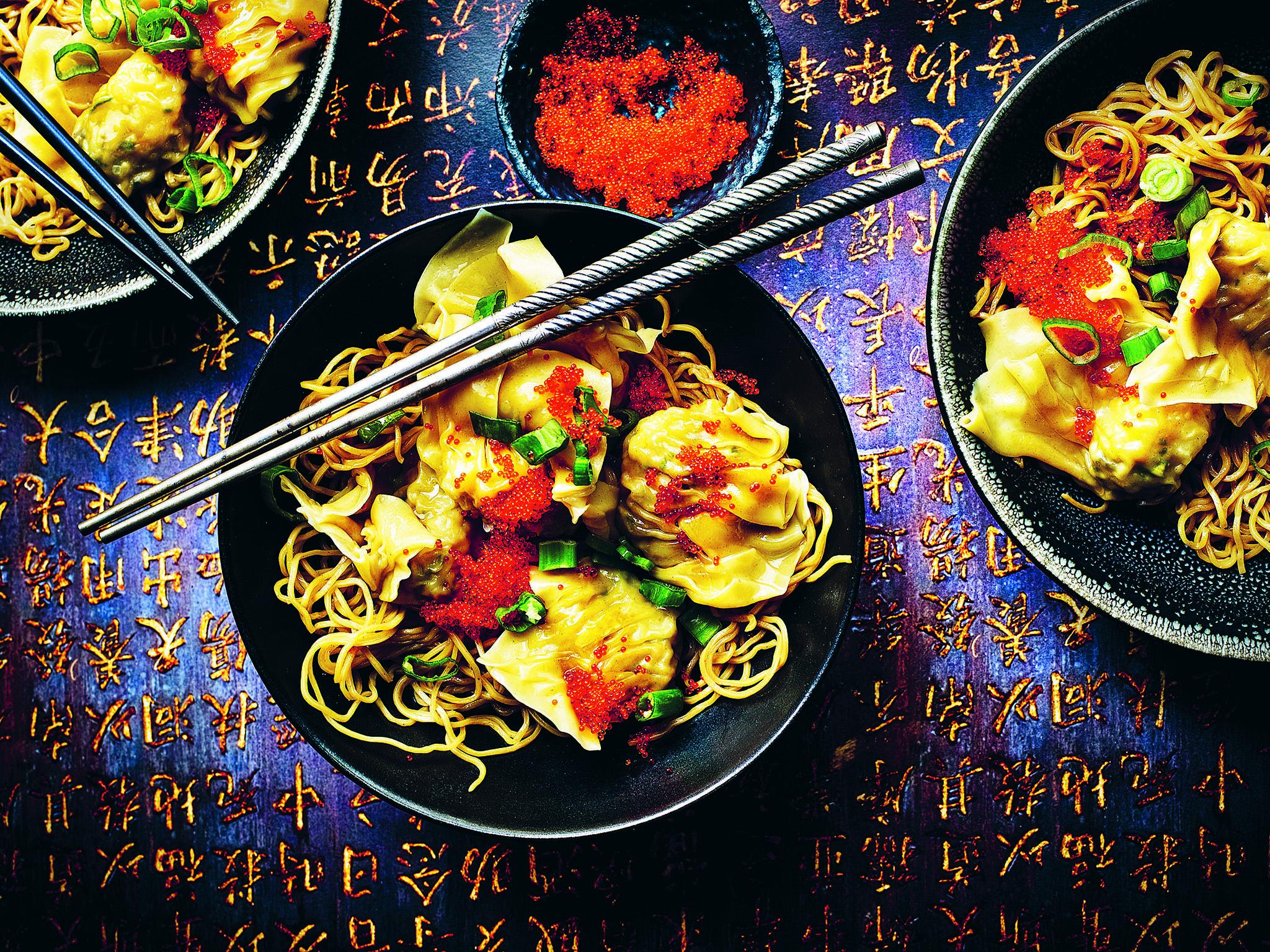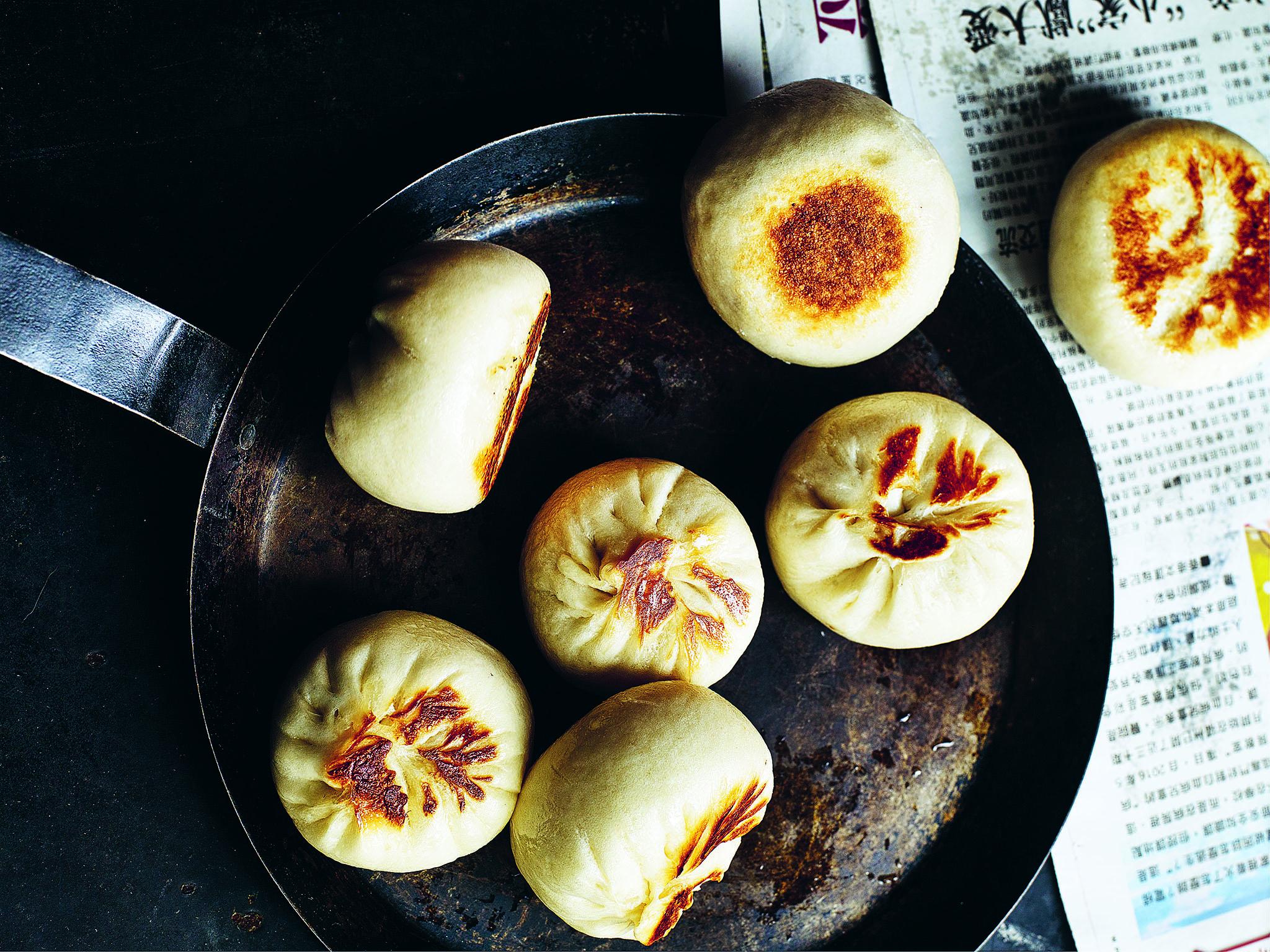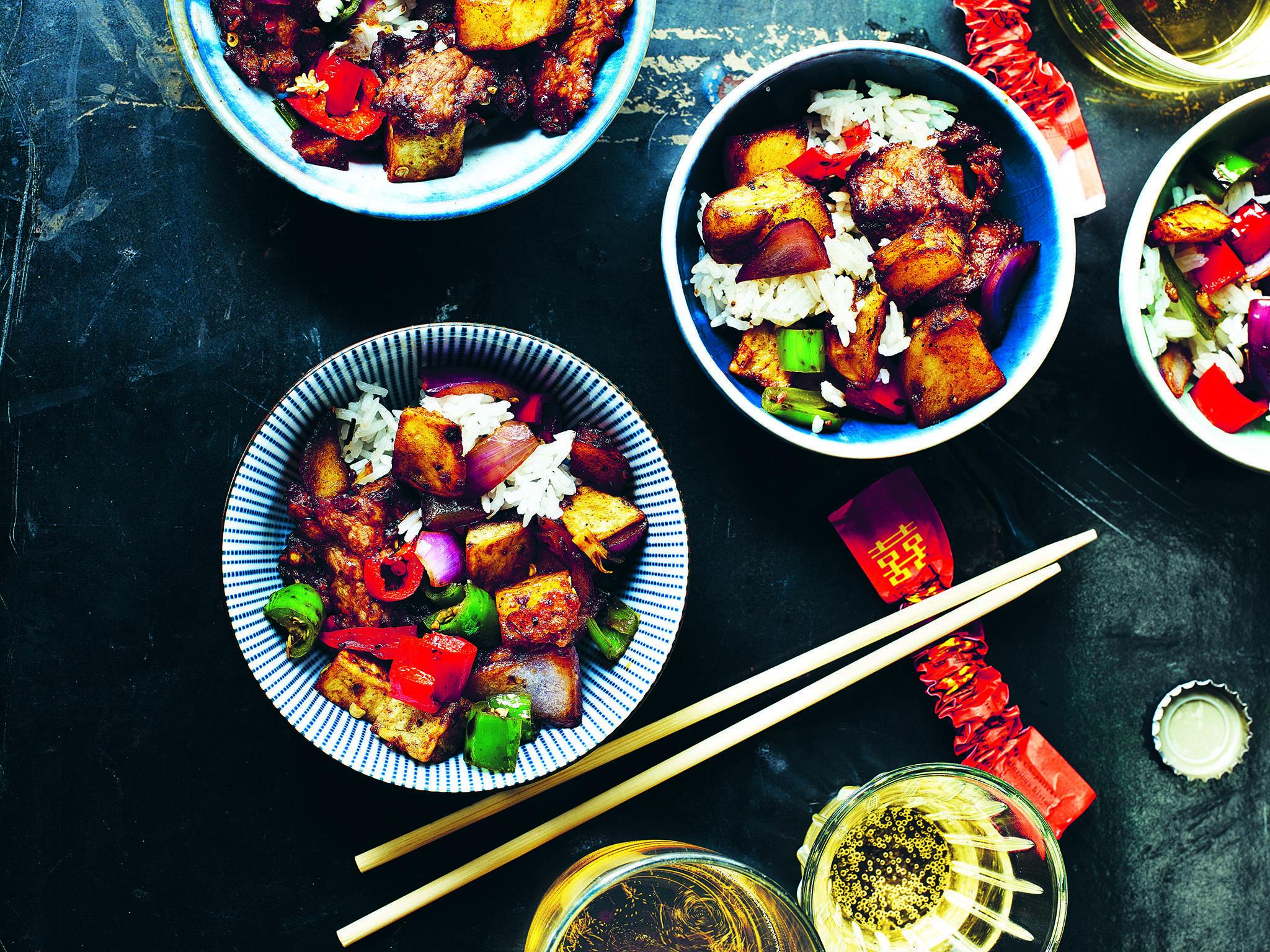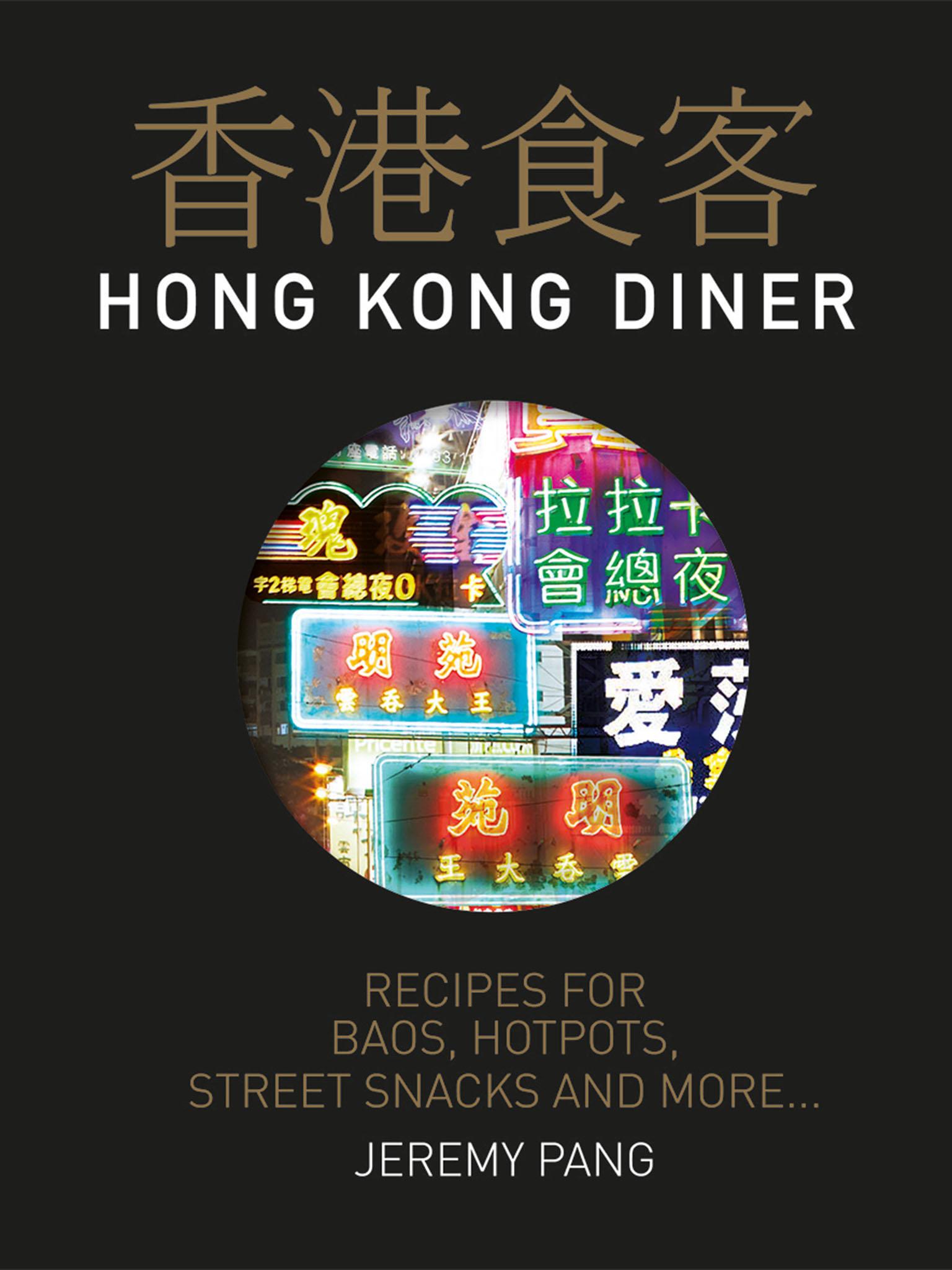Jeremy Pang's Hong Kong Diner recipes for Chinese New Year 2018
Jeremy Pang’s book claims to be the first to explore the east-meets-west diner scene in the cultural melting pot, combing Chinese, American and French-Vietnamese cuisine, and beyond. In celebration of Chinese New Year, here are three recipes to try

Your support helps us to tell the story
From reproductive rights to climate change to Big Tech, The Independent is on the ground when the story is developing. Whether it's investigating the financials of Elon Musk's pro-Trump PAC or producing our latest documentary, 'The A Word', which shines a light on the American women fighting for reproductive rights, we know how important it is to parse out the facts from the messaging.
At such a critical moment in US history, we need reporters on the ground. Your donation allows us to keep sending journalists to speak to both sides of the story.
The Independent is trusted by Americans across the entire political spectrum. And unlike many other quality news outlets, we choose not to lock Americans out of our reporting and analysis with paywalls. We believe quality journalism should be available to everyone, paid for by those who can afford it.
Your support makes all the difference.Wonton braised noodles with tobiko: the jellyfish fold
Makes 25 wontons/serves 4
25 fresh wonton pastries
400ml classic Chinese broth (see page 57)
300g fresh, fine egg noodles (or dried, fine egg noodles, soaked in hot water for 3 minutes and drained)
1 tbsp oyster sauce
½ tbsp light soy sauce
20g orange tobiko, optional (flying fish roe, from sushi specialists)
Spring onions, finely sliced, to garnish
For the filling
4 dried shiitake mushrooms
1 spring onion
½ thumb of ginger
200g raw, peeled and deveined prawns
100g minced pork
For the marinade
1 tbsp oyster sauce
¼ tsp salt
1 tsp sugar
½ tsp pure sesame oil
½ tsp cornflour
Soak the shiitake mushrooms in hot water overnight or for a minimum of 2 hours, then drain. Finely chop them along with the spring onion and ginger and place in a mixing bowl. Lightly bash the prawns with the side of your cleaver or knife, keeping them whole, but making them more flexible, which will make it easier to wrap the wontons.
Lastly, add the pork mince, along with the prawns and the marinade ingredients to the bowl and mix everything together well.
Traditionally, the mix is pounded into a uniform paste by cupping one hand, picking up the mix, and throwing it back into the bowl. This helps to tenderise the meat and knocks out air pockets in the paste. You can also use an electric mixer for the same effect; using the K-hook attachment, place the marinated mix in the mixer and beat on a low-medium speed for 2 minutes.
To make the jellyfish-shaped dumplings you will need to use what I call the croc fold. Place a wonton pastry on a flat surface, positioning it in a diamond shape straight ahead of you. Place 1 teaspoon of filling mix in the centre of the pastry. Fold one corner vertically, over the opposite corner, to form a slightly lopsided triangle. Hold the dumpling up by the top of the triangle with your non-dominant hand. Shape your dominant hand into a “crocodile jaw” shape, where your thumb is the lower jaw and your index finger is the upper jaw.
Start to feed the pastry into the jaws of the croc, squeezing the pastry together into the webbing of your thumb, creating rough pleats as you gather the excess pastry together in your croc’s jaws. Continue feeding until the dumpling is fully closed. Then pinch the pastry tightly along the top of the filling. Do not be scared to clamp down hard, so that the filling is well and truly sealed inside the pastry.
Now bring the broth of your choice (or alternatively, 400ml cups of water with 1 teaspoon of salt added to each) to the boil. Drop in your noodles and blanch for 1½ minutes, then fish them out carefully with tongs and place in a bowl. Next, boil the wontons (usually 5-6 per serving) in the same water or broth for 4 minutes, until they begin to float. Remove the wontons to a separate bowl, using a slotted spoon or a Chinese skimmer, then bring the water or soup back to the boil.
Just before serving, dunk the noodles (either fresh, or dried and soaked) back into the soup or boiling water for 30 seconds, then put them back into their bowl and add the oyster sauce and light soy sauce. Mix well, then divide the noodles between individual serving bowls (they will be the base of the dish). Place the hot wontons on top of the noodles and scatter 2 teaspoons of flying fish roe over the top of each portion. Garnish with finely sliced rings of spring onion.
Serve with a bowl of broth on the side and some lightly blanched green vegetables, such as lettuce leaves or any type of Chinese greens.

Cumin beef and spring onion fired baos
Serves 6-8
1 portion of bao dough, ready to make 20-25 baos *
2 tbsp vegetable oil
For the filling
50g water chestnuts
1 clove of garlic
½ thumb of ginger
5 sprigs of fresh coriander
3 spring onions
200g beef mince
1 egg yolk
For the marinade
1 tbsp cumin seeds
½ tsp Chiu Chow chilli oil
1 tbsp oyster sauce
½ tsp sugar
¼ tsp salt
1 tsp pure sesame oil
Finely chop the water chestnuts, garlic, ginger, coriander and 2 of the spring onions and place in a large mixing bowl. Add the minced beef and egg yolk and mix well. In a pan over a medium-high heat, toast the cumin seeds until fragrant (30 seconds to 1 minute), then tip them into a mortar and gently crush, using a pestle. Add the crushed seeds to the filling mix, along with the other marinade ingredients, and stir to combine well.
After the bao dough has proved for 1½ hours, doubling in size, place the dough on a well-floured work surface and roll it out until approximately 5mm thick. Finely chop the last spring onion and scatter the pieces over the dough. Using a cookie cutter (or the lip of a glass) approximately 7cm in diameter, cut the dough into as many pieces as possible.
Working with one piece of dough at a time, place 1½ teaspoons of filling into the centre of the pastry. Lift up the pastry and squeeze the edges together as if forming a drawstring money bag with your dominant hand. Holding the pastry in your dominant hand, twist the top tightly and continuously with the other hand, ensuring the filling does not leak out, until the pastry is completely sealed and you have a slightly swirled, spiralled effect at the top, and a well-rounded dumpling below.
Once well sealed, lightly roll the bao so that it is an even ball shape, then set aside on a well-floured tray and cover with a slightly damp, clean cloth or tea towel to keep it from drying out. Do the same with the rest of the pastries and filling, then allow the uncooked baos to rest for a further 30 minutes in a warm, draught-free, humid place, such as a room-temperature oven.
To cook the baos, fill a wok one third to halfway up with boiling water. Line 2 bamboo steam baskets with dim sum steamer paper (available online or in specialist shops) or greaseproof paper pierced with holes to let the steam through. Brush the paper with a little vegetable oil, then place the prepared baos in the baskets, twisted side down (to prevent any loose ends from opening up). Put the baskets into the wok, cover with a lid and steam on high for 8 minutes, resisting the temptation to open the lid during this time.
Once steamed, remove the baos from the baskets and bring a large frying pan to a medium heat. Add 2 tablespoons of oil and, once hot, carefully place the baos in the oil, twisted side down. Once the baos have touched the oil, immediately turn them once and fry the other side until golden-brown, about 3-4 minutes. Flip and fry the opposite side until golden brown.
* Bao recipe
Fluffy, pillowy white baos hit China, Hong Kong and Japan many years ago, but it wasn’t until recently that they became a mainstream street snack in the West. With our clear love of burgers and all things bread, it’s no wonder these softer, slightly sweeter breads are so moreish, no matter where in the world we are. The airy texture is great for mopping up sauces, while their firmness makes them the perfect bun to keep a sandwich together. This simple bao dough recipe will get you going, but be warned, trying out new shapes is addictive!
Makes 10 large or 16-20 mini bao
For the dry mix
530g middle-gluten wheat flour (swapsies: plain flour /all-purpose flour), plus extra for dusting
½ tsp salt
7g (1 sachet) fast-action dried yeast
40g caster sugar
15g baking powder
For the liquid
50ml milk
200-250ml warm water (depending on how humid your room feels – if the air feels very dry you’ll want to add a little more water, but if it is very humid, less is required)
25ml vegetable or sunflower oil
Put the dry mix ingredients into the bowl of a free-standing mixer fitted with a dough hook attachment. Mix the liquid ingredients in a measuring jug. Then slowly pour the liquid into the mixer while kneading on a low speed for around 2 minutes, until all the water is mixed into the flour. Once combined, turn the speed up to high for a further 2 minutes, until the dough has a smooth yet tacky feel to it. Once the dough has been well kneaded, dust it with 2 tablespoons of flour. Shape the dough into a rough ball, scraping off any additional dough on the sides of the bowl, then coat it lightly with 1 tablespoon of vegetable oil, put it back into the bowl, cover with a damp cloth and leave aside in a warm, preferably moist, draught-free location (such as inside a room-temperature oven) for 1-1½ hours.
Once the dough has doubled in size, you can make it into whatever shapes you wish before steaming. Steaming time will vary between 8 and 15 minutes, depending on the shape and size of your finished buns (the thinner the bun, the shorter the steaming time).

Black pepper beef and potatoes Hong Kong style
Serves 3-4
300g rib-eye steak
1 large Maris Piper or King Edward potato
1 white sweet potato
1 small red onion
1 spring onion
1 large fresh green chilli
1 large fresh red chilli
1 stick of fresh green peppercorns
Vegetable oil, for deep-frying
5-6 sprigs of fresh coriander
For the steak marinade
¼ thumb of ginger
1 clove of garlic
¼ tsp white pepper
½ tsp sugar
Pinch of salt
½ tsp pure sesame oil
½ tbsp cornflour
For the sauce
¼ tsp salt
½ tsp sugar
½ tsp cracked black pepper
1 tbsp Lee Kum Kee black pepper sauce
50ml fresh chicken stock
1 tbsp light soy sauce
Remove any rind or fat from the steak, then slice the meat into roughly 3mm-thick rectangles. Tenderise by bashing them with a cleaver or meat hammer, creating a large surface-area for quick cooking. Finely chop the ginger and garlic. Place in a bowl, adding the remaining marinade ingredients. Massage the marinade into the meat, then tip into a food bag, seal tightly and marinate in the fridge overnight.
When ready to cook, peel the potato and sweet potato and cut into 2-3cm (¾-1¼ inch) cubes. Put the potatoes into a pan of cold, salted water, and bring to the boil on a high heat. Lower the heat to a simmer and cook for about 5 minutes, until the potatoes start to soften. Drain in a colander, giving the potatoes a little bash around the sides to roughen the edges and allow to cool (do not cover). Roughly dice the onion and cut the spring onion into rough chunks. Roughly chop the red and green chillies. Run your fingers along the stick of green peppercorns to separate them. Mix the sauce ingredients together in a small bowl.
Now build your wok clock: place the marinated meat at 12 o’clock, followed by the diced onion, spring onion and chillies, and lastly the sauce bowl, clockwise around the plate. If you have a deep-fat fryer, set the temperature of the oil to 180C. Otherwise you can use a wok or large saucepan, filled one-third with vegetable oil, to deep-fry, testing the oil with a wooden chopstick for heat (the end will fizz when the oil is hot enough for deep-frying). Once your oil is hot enough, deep-fry the potatoes for 7-8 minutes, until golden brown and crispy. Then remove from the fryer or wok and drain on a plate covered with kitchen paper.

Heat 5 tablespoons of vegetable oil in a wok on a high heat until smoking hot, then lay the meat in the hot oil, separating each piece as you add it. This is the meat “blanching” stage – to quickly seal all the flavour and moisture into the meat. Using a slotted spoon or a wok “spider”, fry the meat in the oil for 30 seconds to 1 minute, then remove onto a layer of kitchen paper to soak up the excess oil. Pour off any remaining oil from the wok into a heatproof bowl and bring to a high heat again.
Once smoking hot, add the onion and spring onion and stir-fry for 30 seconds, then add the chillies and fry for 10 seconds. Maintaining a high heat, pour in your sauce, return the meat to the wok and continue to stir-fry for an additional 30 seconds. Add the crispy potatoes, toss through 3 or 4 times to wrap the sauce around them, and tip into a large bowl, ready to serve. Garnish with a few sprigs of coriander.
‘Hong Kong Diner’ by Jeremy Pang (Quadrille, £15) Photography © Kris Kirkham
Join our commenting forum
Join thought-provoking conversations, follow other Independent readers and see their replies
Comments